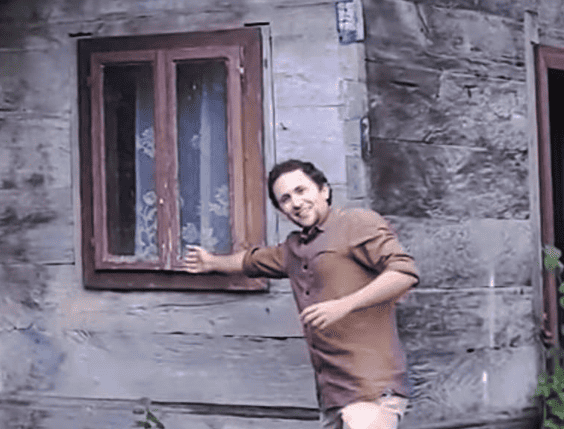Simon Fink
The last time I wrote for the Jewish News, I shared my experience as one the U.S.’s young adult delegation to March of the Living.
I’ve similarly just returned from a JDC trip to Bosnia and Croatia as part of its young adult program, Entwine. It was meant to visit Jewish communities, meet with community leaders, and learn about JDC’s work in the region. JDC is the world’s largest Jewish humanitarian organization.
Most exciting for me, I’d learned Fiddler on the Roof, the inspiration for my bar mitzvah theme, facial hair, and love of Tradition! was filmed in a little Croatian village that served as the fictional Anatevka and I was going to visit it!
That was the plan, at least it was before the October 7th massacres in Israel. Then the world changed, and although our trip went forward, we faced the emotional roller coaster.
As in the greater world, we too, in our small group of 19, despite us all being Jews and all based in Los Angeles, had our swirling differences of opinions, some unspoken, except in overhead whispers. Our trip leaders noted the elephant in the room, especially after the Gaza hospital explosion coverage debate.
One, a licensed mental health therapist, made space for us to talk about it, specifically an evening where we sat in a circle and listened to one another. There were folks in pain for reasons I hadn’t even thought of—those who felt alone at work as the only Jew with no one to talk to about the horror unfolding, those whose friends hadn’t reached out to them, or worse, who’d had friends block them.
Others were shouting into the void on social media and in texts with family, all silent screams. But of all the Jews in the world, we that night sat and listened to each other, halfway through a trip in the Balkans, one of the most infamously fractured places on the planet. We then counted off into groups of three for smaller discussions. That was the part I feared the most.
What was my fear? Never could I imagine sitting in a room of young Jews and think our bedrocks, our values, would not be the same. Here, for the first time in my memory, I didn’t know whether the Jew sitting across from me possessed deeply held beliefs in conflict with mine.
Were they on the other “side?” Even harder was that in that moment I knew I could not try to reason with someone who was emotional, to bring nuance to someone who literally is fearing for their family’s life. Sure enough, right after we counted off, a participant broke into tears. They were about to be in my group of three, and being real honest here, I thought, uh oh, ‘I’ll have to keep my opinions to myself.’ There will be no release for me. I’d again be disappointed in myself for not standing up for what I believe in.
I assumed her tears were based on fears different from my own. That she was on the other ‘side.’ Turns out, as I learned in our smaller discussion, we shared many of the same fears. We were even two of the most overlapping in the entire group. My assumption was so wrong.
How do we keep our heads above water, our families and friends together, when we are hit by wave after wave of divisions? Political extremism, COVID, and now this.
Each wave seems to hit closer to home than the last, more emotional, higher stakes. It’s that much more tempting to let go and be carried off one way or the other. It’s tribal, even instinctual. Holding the line is a lot easier than holding hands when facing someone that disagrees with you. Add in loss and fear and anger? Almost impossible.
Pride. My grandfather, Marvin Simon, often said ‘I is a Jew’ – where is that pride sourced? Tevye? Tradition? Israel? The Shema? A synagogue? My March of the Living trip was about survival. This was… is… something else.
This is about pride in still finding each other, holding space, holding each other not just despite the waves but because of the waves.
On that night in Sarajevo, called the “Jerusalem of Europe” for its proximity of so many religions, we dug down past our differences, past the cracked foundations that we thought formed our Jewish identities to a place where we could recognize one another’s fears and see each other as one again. In that, I found greater pride than even when standing in the remains of the fictional Anatevka.
Our trip leader said ‘begin with what we have in common.’ I’m working with other participants from the trip to organize a similar evening for the wider young adult Jewish community in LA. In person.
Our bedrock shouldn’t be a rug that feels like it can be pulled out from under us. That’s not a foundation. It’s what we have in common. Don’t try to find it over Instagram or text or email.
Listen, face to face. We need it. You need it. For the release, for the churning, and then for the connection. For you to not just say “I is a Jew” but “We is a Jew.”
Start there.

